Kunduz – The Remnants of Guerillas
“Why those commanders haven’t surrendered the weapons yet?”
Kunduz is the capital of the Kunduz province, located just 60 km away from the Tajikistan border. Despite the high mountains that lead one to Kunduz from Kabul, Kunduz is a very hot place. The road from Kabul passed through the Salang Tunnel, passing through the stomachs of high mountains that once isolated northern Afghanistan from its central. The tunnels were built in 1960s, before the decades of wars in the country, one of the proofs how prosperous Afghanistan was. The long tunnels, resembled never ending dark caves, were not something to be built by a poor country. When I visited Afghanistan in 2003, the Salang tunnels were closed for reparation, apparently done under foreign reconstruction programs, for several months.
The hot weather of Kunduz is comparable to that of Kandahar or Jalalabad, notorious of their heat waves in unforgiving summer peaks. The altituted of Kunduz is merely 400 m, a sudden decrease from the Salang Tunnel which seats on altitude of 3363 m. Kunduz is like the bottom of the plain bowl of Central Asia, with its characterized heat and environment. The people of Kunduz are supposed to be Uzbek majority as the old resource I was reading, but I saw more Pashtuns on the streets.
The journey from Kabul to Kunduz took me 7 hours (400 Afs by minibus) and I was welcomed by the Pajhwok reporter of the area, Mr Rohullah Armaan. Mr Armaan took me to the Bala Hissar (the High Fort), once the old fort of the city, and still one among the most important historical remnants of the area. He has an amazingly big motorcycle which made the travel much easier.

Remnants of decades of wars in Afghanistan: tanks and artillery machines scatter former battlefields.
The fort was the residence of Murad Beg, the Uzbek ruler of Kunduz in the mid-19th century. Today the fort area was a plain ground scattered by the corpses of tanks. There are niches in a row, and in each niche there was a pale of ammunitions. Shafiqullah, a 24 year old police guarding the area, said that the ammunition was collected from the war commanders who surrendered their artillery. The stuff was put in the niches just only a week ago. Each niche also mentioned the name of the commander whom the ammunitions once belonged to, like Commander Dawood, Commander Amin, etc. I was astonished by the size of the bombs, grenades, bullets, etc. Some was produced by Russia (or at least Cyrillic using countries) and some was from Pakistan. I asked them whether they were not afraid to put these arms in open air, from the thieves who might easily climbed the hills and stole the usable stuff. Shafiqullah and other policemen were there to patrol. And the fort is surrounded by mines. Shafiqullah himself was armed by an AK-47.
The fort area once was frontlines of the wars, since the wars with Russia, the civil wars of the Mujaheddin, and the war against Taliban in November 2001. Kunduz saw fierce resistance against Taliban. Bala Hissar is now a witness of the fightings, with Taliban’s tanks corpses scattering the area and the unexploded mines buried deeply in the ground. The de-miners have cleared the area, but there is still risk of stepping on unexploded mines.
Rohullah Armaan, the reporter of Pajhwok Afghan News, is a man of 35 years old. He has spent some years as a refugee in foreign countries, starting in Pakistan in 1996, until some years in Ukraine and Denmark. The years in Ukraine gave him knowledge of Russian language, and the years in Denmark Danish language. Today he speaks none of them.
He is quite a moderate Afghan Moslem. He lets his wife to go outside without his companion, and his wife doesn’t wear burqa. His wife doesn’t work though. He and his wife plus the whole family were in the Western countries for years, and it was maybe also the reason. When he went to Denmark, as an Afghan refugee at the peak of Taliban occupation he had neither passport nor visa, he was interviewed by the police. He was clean-shaved – a widely accepted sign in the West as a non terrorist. The interview result was positive and he was permitted to live in the country for two years.
One of his compatriots was not that lucky though. This poor Afghan guy claimed that he could not stand the Taliban, Taliban was like this, Taliban was like that. He kept murmuring. But the police who interviewed him was not satisfied with his answers. He had a very big beard, and he wore turban also. The police had a photo of a Taliban fighter and showed the picture to him, “Look, you are the same as him. Why you are here? Just go home.” He was given 2 month of time for further investigation. In the 2 months he was interviewed 6 times, and at last the result was still negative. He was not given the status of refugee and had to leave the country.
Taliban claimed themselves as the most Islamic among the Muslims. They even said that Arabian people were not as Islamic as them. Armaan doubted it. “Our country became a country of history (keshvari tarikhi) instead of a country of modernity.” Taliban forbid furniture in the office as it was not Islamic. The Prophet was sitting on the floor at that time, and it was the example for all Moslems. Computer was not even noted in the Holy Quran, so was that the reason to be illegal? And being a journalist like him, the Taliban occupation guaranteed that he lost his freedom of writing.
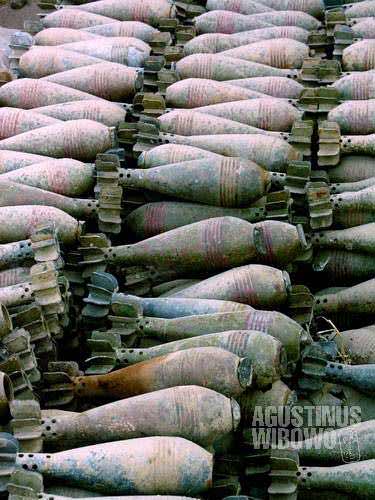
Weapons and explosives are collected from local warlords. Disarmament programs are taking place in Afghanistan to create peaceful condition and stability in the war-torn country.
Now the era of journalism had come back again to Afghanistan. Young journalists like Armaan are excited to learn new things from the new world. Armaan attends a workshop of investigation journalism (journalism e tahqiqi), one of the most difficult field in journalism. The trainers are from Nepal and Afghanistan. There are 20 students in this workshop. But not all are enthusiastic with the workshop. Some female journalists are notorious to be absent. Armaan said the reason was difficulty of transport. But the most important reason, there was not reading culture in Afghanistan. Investigative journalism requires the journalists to read lots and lots of materials, to think creatively and critically, and to be brave. To be brave is not a big matter for Afghans. But to read the material is an obstacle.
The trainees gave a task for the workshop members, to investigate why the warlords and commanders had not surrendered the weapons yet. The government of Afghanistan had made the ultimatum for the weapon owners to surrender all of the ammunition and stuff, to mark the beginning of peaceful era without war in the country. But the ultimatum didn’t bring quite positive result. Some had chosen to follow the government suggestion, just like the arms I saw in Bala Hissar; but most of the others, no. Many of the commanders still prefer to keep their arms.
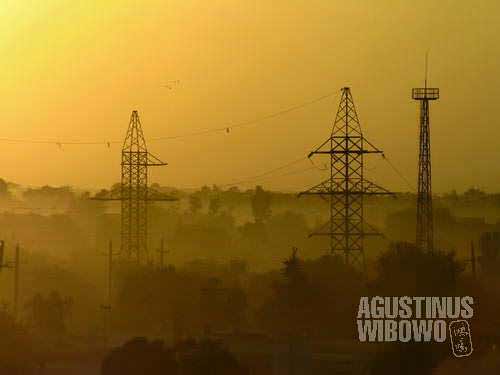
The town of Kunduz at sunset. Kunduz is among few towns in Afghanistan where electricity power system is quite extensive.
This is not an easy task. To interview the wild warlords, those guerillas, one needs a limitless courage, a good connection web, and luck. The guerillas might or might not tell the truth and the journalist needs to analyze it. The risks may come from the members of the guerilla groups who are not happy with the investigations, and may bring the journalists to bad fate. For journalists with family like Armaan, the death risk for a workshop assignment is simply not worth it.
Among the 20 students, none of them did the assignment yet.
“Why those commanders haven’t surrendered the weapons yet?” is still a question without a clear answer.

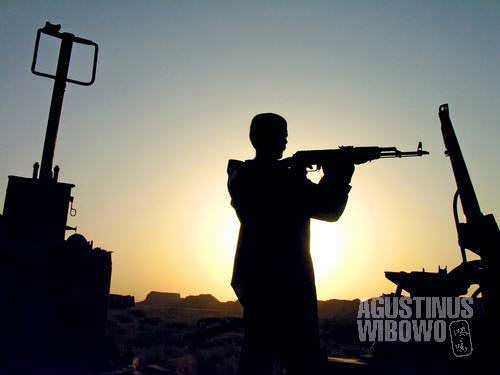
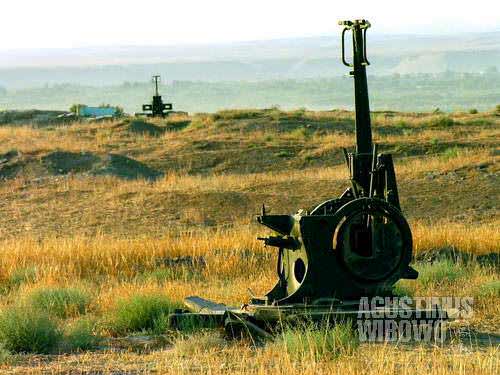
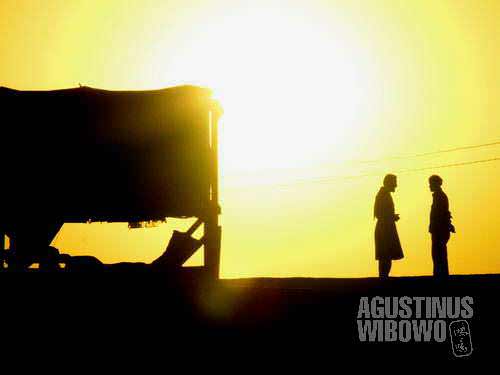





hello, Hongming, glad to know that you are safe.
I have finished the 50days plus tour around Indochina. Starting from northern Laos and in fact end in Hue,central Vietnam. It is really amazing. It is regretful that I did not stay in North Vietnam(Hanoi,Halong,Sapa…) as something urgent happen in my family.
Wish to keep contact with you. On travel,photographing, and life.